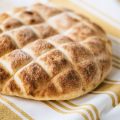For those managing gluten sensitivity or celiac disease, the prospect of enjoying a slice of hearty sourdough bread sparks deep longing yet poses vexing questions. With sourdough’s rising popularity and digestibility claims, many wonder if it could provide a gluten-free bread option or remain strictly off limits. Arm yourself with knowledge so you can thoughtfully explore if this artisanal darling deserves a spot at your gluten-free table. Now dive in as we settle the debate – can sourdough truly be gluten-free or not?
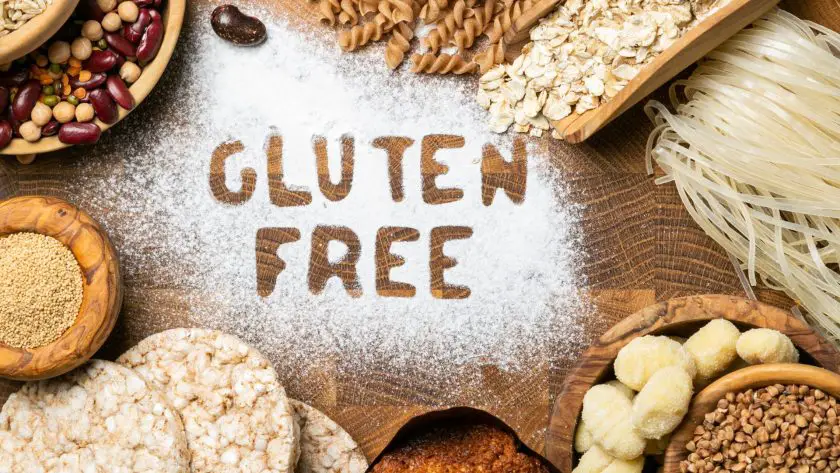
Table of Contents
- Is Sourdough Bread Gluten Free?
- Gluten Content in Sourdough Bread
- Myths and Misconceptions about Gluten in Sourdough
- How to Tell if Sourdough is Gluten-Free
- Gluten-Free Alternatives to Sourdough
- How to Make Sourdough Gluten-Free
- Sourdough is Not Quite Gluten Free
- FAQs
Is Sourdough Bread Gluten Free?
Let’s get this question out of the way: there is no such thing as 100% gluten-free sourdough bread. Sourdough bread contains less gluten than your average bread, especially if it’s been long fermented. There are options to use non-gluten starter to make sourdough bread. But people who are very gluten-sensitive should still avoid sourdough.
Let’s get into the details.
Gluten Content in Sourdough Bread
Sourdough bread has a reputation for being easier to digest than regular bread for those sensitive to gluten. But can sourdough truly be considered gluten-free?
The answer lies in understanding exactly how gluten forms during the bread making process.
Gluten Development in Bread
Gluten is a protein composite that gives bread its chewy texture. It is formed when the proteins gliadin and glutenin, which exist separately in flour, combine together and form cross-links during kneading or mixing. This networking of proteins is what allows dough to rise and gives baked goods their structure. More gluten development results in chewier bread.
With regular yeasted bread, commercial yeast is added to dough to produce air bubbles that make bread rise. The aggressive mixing needed to distribute the yeast causes proteins to cross-link rapidly and produce lots of gluten.
The Role of Fermentation
Sourdough bread relies on naturally occurring yeasts and bacteria for leavening instead of commercial yeast. These “wild” microbes need to be fed, so sourdough starts begin fermenting a day or more before baking.
During fermentation, enzymes break down complex molecules like starch and protein. In wheat, the enzyme protease breaks down gluten proteins into smaller pieces. Since gluten only forms when gliadin and glutenin link up, this breakdown means there is less intact glutenin and gliadin to join together. In essence, fermentation pre-digests the gluten before you ever take a bite.
The longer the fermentation time (like in my long fermentation sourdough bread recipe), the more gluten gets broken down. In one study, 24 hours of fermentation removed nearly 50% of gluten from wheat bread.
Sourdough Isn’t Gluten-Free
Despite having reduced gluten content, virtually all sourdough bread still contains gluten and is not safe for those with celiac disease or gluten sensitivity. One study found gluten levels in sourdough loaves ranging from nearly 15,000 ppm down to 111 ppm. In contrast, FDA regulations stipulate foods must contain less than 20 ppm of gluten to be labelled gluten-free.
However, some preliminary research indicates the altered gluten in long-fermented sourdough may be easier to digest and less likely to provoke immune responses for those sensitive to gluten. More studies are needed to confirm these findings.
So while artisan-style sourdough made from wheat flour can’t be considered gluten-free, its altered gluten chemistry may provide a more tolerable form of bread for some with gluten issues. Using Heritage grains like einkorn wheat, which has different gluten proteins than modern wheat, can further reduce issues. Those extremely sensitive should exercise caution and consult their doctor before trying sourdough.
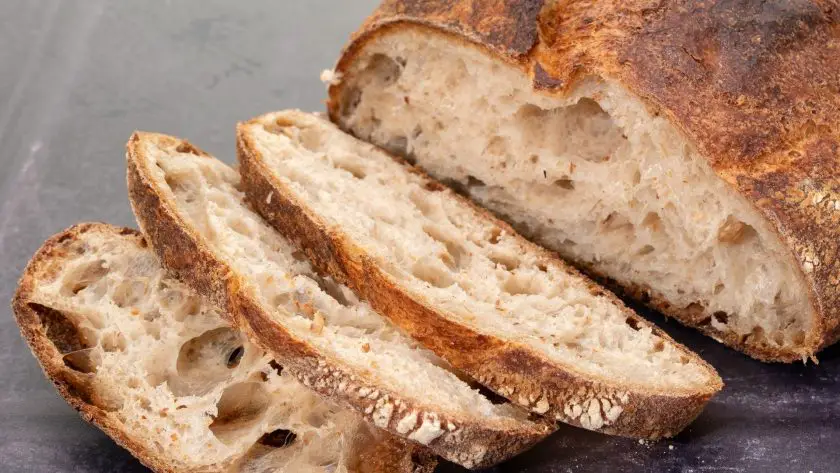
Myths and Misconceptions about Gluten in Sourdough
With all the buzz around sourdough and digestibility, several myths have cropped up implying that sourdough bread is gluten-free. But how much truth is there to these claims?
Myth #1: All Sourdough Is Gluten-Free
This is hands down one of the biggest misconceptions out there. The reality is NO sourdough made from wheat flour can be considered 100% gluten-free.
While the fermentation process does break down a decent chunk of gluten, there is always residual gluten remaining. One study found gluten levels between 111 ppm to nearly 15,000 ppm across different sourdoughs.
To put that into perspective, the FDA stipulates foods must contain less than 20 ppm of gluten to be labelled gluten-free. So sourdough doesn’t even come close to meeting that threshold.
Myth #2: Sourdough Has the Same Gluten Content As Regular Bread
On the flip side, claims that sourdough contains just as much gluten as regular yeasted bread are also inaccurate. Multiple studies have substantiated that long fermentation significantly reduces gluten levels by upwards of 50% in some cases.
So while sourdough isn’t gluten-free, it tends to have markedly less gluten than other leavened bread. This lowered content may provide relief to those less sensitive. But those with celiac disease still need to abstain as their reaction threshold can be as low as 10-50 mg per day.
Myth #3: All Sourdough Is Equally Digestible
This myth assumes that all sourdough has similarly “safe” gluten levels or improved digestibility. In reality, sourdough runs the gamut in terms of gluten content and digestibility impacts.
Factors like the type of flour, length of fermentation time, use of commercial vs wild yeast, and small vs large bakeries can substantially alter results.
For instance, a bakery that uses mostly white bread flour and allows only an 8 hour rise will produce a very different loaf than one using ancient heritage grains and 48+ hour cold fermentation.
Digestibility can also vary widely based on the individual. So there are no guarantees that one sourdough formula will work for everyone with gluten issues.
Takeaways on Sourdough Myths
While the notion of a gluten-filled, yet easily digestible bread sounds ideal to many dealing with gluten issues, sourdough is not a clear-cut solution. Outcomes depend tremendously on the production methods and consumer’s personal tolerance.
Rather than buying into myths, those with gluten concerns should approach sourdough with caution under medical guidance. Targeting bakeries using proper artisan techniques and heritage grains may provide better odds of tolerability.
For the majority of gluten sensitive individuals though, sourdough likely falls into a grey area that must be tested carefully to determine if it can be part of a gut-friendly diet.
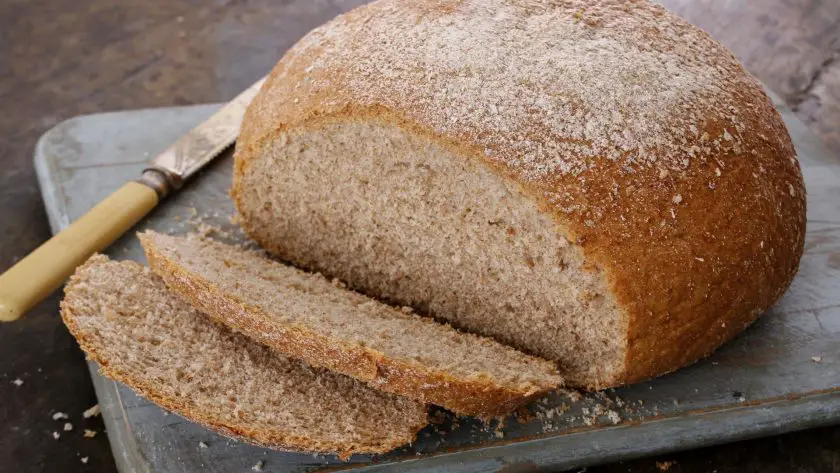
How to Tell if Sourdough is Gluten-Free
With so much confusion around gluten content in sourdough, how can you truly know if a loaf is gluten-free? While testing kits and proper labeling can help provide answers, doing your homework on ingredients and manufacturing methods is key.
Reading the Label
Start by checking if the sourdough packaging has any gluten-free certifications or labels. In the United States, look for the Certified Gluten-Free mark from GFCO, often denoted by an ear of wheat inside a circle. Manufacturers paying for certification testing must meet standards verifying less than 10ppm of gluten.
You can also scan the ingredients list, but don’t stop there. Some producers make gluten-free sourdough from ancient grains like einkorn or gluten-free flours but don’t label it as gluten-free.
Researching Ingredients
Speaking of ingredients, going beyond the label to understand exactly what flours are used can offer more clues.
Heritage grains like einkorn have different gluten structures than modern wheat and cause fewer issues for some folks. Other gluten-free options include cassava, almond, and chickpea flours. Sourdoughs made solely from these ingredients should be reliable.
However, “wheat flour” or “bread flour” signals standard wheat with gluten is present. Rye and barley also contain gluten. If you spot any of these, tread cautiously. Cross-contamination is also likely in facilities processing multiple grains.
Getting Testing Kits
If you still have doubts or are highly sensitive, home test kits can help detect traces of gluten. The most sensitive options use ELISA antibody technology to find as little as 5 to 10 ppm of gluten in foods. While pricier than basic kits, they give the most definitive answers.
Sampling properly is crucial when testing sourdough with kits. Ensure you gather crumbs from the entire interior of the loaf, avoiding cross-contaminated surfaces. You want a thorough reading since gluten levels in sourdough can vary in different areas.
When in Doubt, Make it Yourself
Ultimately, producing your own gluten-free sourdough may be the best way for those highly sensitive to control the outcome completely.
Find recipes using certified GF flours and ensure your baking tools are uncontaminated. Allow for extra long fermentation times to break down residual glutenin/gliadin complexes. Then enjoy worry-free homemade sourdough bread!
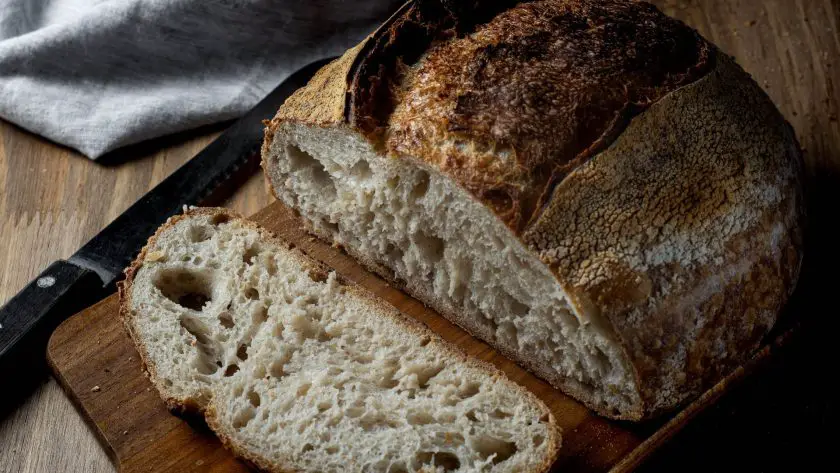
Gluten-Free Alternatives to Sourdough
While sourdough shows promise for improved gluten tolerance, it still contains gluten and isn’t suitable for all. Thankfully, innovations in gluten-free bread making offer tasty alternatives.
Seeded & Ancient Grain Breads
Seeded breads utilize gluten-free grains like millet, sorghum, buckwheat, amaranth, teff, and quinoa. Mixing a variety creates nutty flavor and hearty texture similar to multigrain wheat breads.
Ancient grains like einkorn are kin to modern wheat but often better tolerated. Einkorn’s different gluten structure and extra protein content mimics whole wheat flavor in a safer form.
Brands like Canyon Bakehouse use custom blends of seeds, nuts, and ancient grains to craft bakery-style sliced breads, baguettes, and rolls. The varieties give gluten-free fans their seeded bread fix.
Nut & Root Vegetable Bread
Breads based on nuts, tubers, and root veggies offer a neutral backdrop for gluten-free loaves. Almonds and chickpeas add protein and healthy fats. Starch-rich roots like tapioca, cassava, potato, and sweet potato help bind and aerate the dough.
Companies like Schar specialize in classic white and whole grain bread tastes by expertly balancing nut and root ingredients. Their products match the taste and look of wheat bread with certified gluten-free assurance.
Alternative Grain Flatbreads
A final category tailor-made for gluten-free diets is flatbreads. Courser grain flours and minimal mixing keeps these unleavened breads tender. Teff and buckwheat work well as pizza crust replacements.
Hands-on alternatives like Bob’s Red Mill offer gluten-free pizza dough, naan, chapatti, and tortilla mix kits. DIY flatbreads mean customizing flavors exactly to your tastes. Most recipes require just basic ingredients and quick stovetop cooking.
How to Make Sourdough Gluten-Free
While most artisan sourdough contains gluten, using specialty ingredients and careful technique makes crafting gluten-free loaves possible.
Follow these steps for worry-free homemade sourdough.
Choose Gluten-Free Flours
Naturally gluten-free flours provide the foundation for gluten-free sourdough. Good options include:
- Brown rice flour – Neutral flavor
- Sorghum flour – Heartier taste
- Cassava flour – Starchy and binding
- Chestnut flour – Nutty and sweet
- Quinoa flour – Protein punch
Aim for flour blends that balance flavors and textures. Avoid bean, garbanzo, almond, and coconut flours as their distinct tastes overwhelm sourdough.
Craft a GF Sourdough Starter
A starter culture kickstarts sourdough’s fermentation. Most traditional starters contain wheat or rye flour.
Make a gluten-free version by combining brown rice or sorghum flour with non-chlorinated water in a jar. Allow to ferment for 48 hours, stirring occasionally, until bubbly. Then begin regular feedings with more flour and water.
Maintain your culture’s microbes by feeding it daily. After a week it will develop into a bubbling gluten-free starter perfect for baking.
Knead & Proof Dough Gently
When mixing and proofing, handle gluten-free dough gently to avoid overworking. Knead just until the ingredients come together in a shaggy mass – don’t expect gluten development.
And give dough ample floor time. Most gluten-free sourdough recipes involve an overnight proof in the fridge for flavor and structure. Yeast action strengthens the network over time.
Bake Thoroughly
Gluten-free loaves bake differently than wheat bread. Set your oven 25 degrees lower, bake 10 minutes longer, and test doneness with an instant-read thermometer to hit an internal temp of 208°F.
The lower temp allows exterior crust formation before the inside overbakes. And gluten-free dough needs that extra oven spring for an airy crumb texture.
Store Properly
Without gluten, GF sourdough stales quickly. Cool completely before slicing. Store cut sides down on the counter for same-day consumption and freeze remaining slices.
To recrisp slices, toast directly from frozen. And never refrigerate or freeze unsliced loaves as moisture ruins the crust.
With specialty flours, gentle handling, and customized baking, you can savor tasty homemade sourdough sans gluten. Adjust recipes as needed based on your climate, oven, and personal tolerance.
- BEGINNER FRIENDLY: Sourdough is one of the most forgiving cultures to work with, making it a great choice for beginners or breadmaking pros. Plus, this dehydrated culture gives you a chance to get familiar with feeding your starter before its time to bake!
- HEIRLOOM STYLE: With proper care, our sourdough starter can be reused indefinitely to leaven baked goods, making it easy for you to create delicious bread over and over again.
- VERSATILE: Make more than just artisan bread! Use this starter to try your hand at creating delicious gluten free pizza, gluten free cookies, and other tasty gluten free snacks.
- HEALTH BENEFITS: Sourdough is not only a low carb bread, but also provides a great source of vitamins and minerals. Plus, finished loaves are chock full of prebiotics, which help promote better gut health.
- SAFE: Each batch is pathogen tested by a trusted third-party laboratory so you know you are getting a high quality, healthy starter to make great baked goods at ho
Prices pulled from the Amazon Product Advertising API on:
Product prices and availability are accurate as of the date/time indicated and are subject to change. Any price and availability information displayed on [relevant Amazon Site(s), as applicable] at the time of purchase will apply to the purchase of this product.
Sourdough is Not Quite Gluten Free
Sourdough bread falls into a gray area when it comes to gluten content and sensitivity. While the fermentation process does alter the gluten to some degree, virtually no sourdough can be considered 100% gluten-free.
However, studies show extended fermentation can reduce gluten levels substantially compared to regular yeasted bread. For individuals with more moderate gluten sensitivity, indulging in long-fermented sourdough may provide relief without triggering severe reactions. Those highly sensitive should still avoid it altogether or exercise extreme caution under medical guidance. Outcomes also depend heavily on the specific flour used and production methods.
In the end, navigating gluten issues comes down to an individualized approach based on medical history and unique sensitivity levels. Blanket solutions rarely apply. We all must find our own paths – even when they wind in different directions than the latest food trends might suggest.
FAQs
Is Sourdough OK For Gluten Intolerance?
Yes you can eat sourdough if you’re gluten intolerant. Sourdough is a fermented product. Essentially, it’s a process that breaks down the gluten in the flour and makes sourdough bread safe for people with gluten intolerance.
What Breads are Naturally Gluten Free?
Some breads that are traditionally gluten free include: cassava bread, potato bread, and chickpea bread.
Is Sourdough Bread Inflammatory?
Sourdough bread is anti-inflammatory, with rich vitamins that can easily be digested.
Why Can Celiacs Eat Sourdough Bread?
Though sourdough bread isn’t gluten free, the methods used to make sourdough bread break down some of the gluten in the flour which is why it is suitable to eat for those who suffer from celiac disease.
Is Sourdough Bread Good for Your Gut?
Sourdough bread can be beneficial for gut health due to its fermentation process, which may aid in digestion and enhance nutrient absorption.
Is Sourdough Bread Healthy?
Sourdough bread has a lot of health benefits, especially compared to most commercial bread.
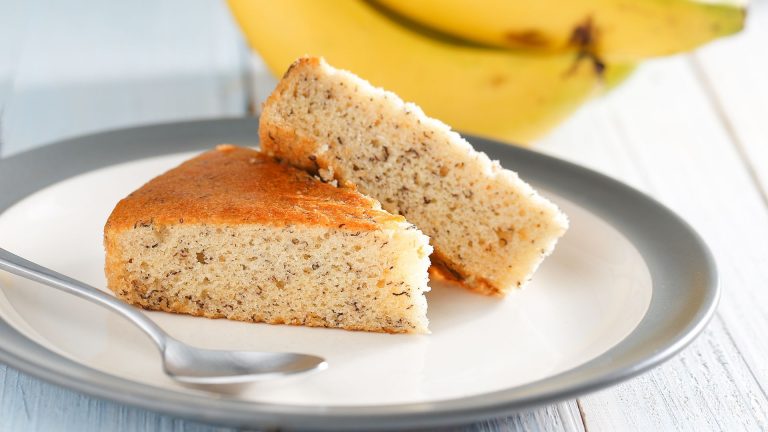
Gluten Free Sourdough Banana Cake
With beautifully potent banana flavours, followed by a touch of sweetness from fruit and honey, this gluten-free cake is the perfect snack for any time of day.
- Total Time: 12 hrs 30 mins
- Yield: 1 cake/12 slices 1x
Ingredients
- 3 ripe bananas
- 1/3 cup melted coconut oil
- 1/2 cup gluten free sourdough starter
- 1 cup sorghum flour
- 1/2 cup tapioca flour
- 3/4 cup sweet rice flour
- 1 egg
- 3 tbsp honey
- 2 tsp vanilla
- 2 tsp ground cinnamon
- 3/4 tsp sea salt
- 3/4 tsp baking soda
Instructions
- Mash the bananas in a medium mixing bowl, then stir in the coconut oil, gluten free starter, and flours. Combine well until a soft dough has formed.
- Cover and allow to ferment for 6 to 12 hours.
- Once you’re ready to bake, preheat the oven to 350F, and butter a baking tin.
- Add the egg, honey, vanilla, cinnamon and salt to the fermented dough. Mix the ingredients until well combined, then add a drizzle of baking soda.
- Scrape the butter into a prepared baking dish and place in the oven baking for 30 minutes.
- Prep Time: 12 hrs
- Cook Time: 30 mins
- Category: dessert
- Diet: Gluten Free
Nutrition
- Serving Size: 1 slice
- Calories: 200 kcal
- Fat: 7.3 g
- Carbohydrates: 32 g
- Protein: 2.5 g


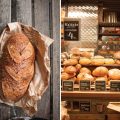
![[Video] From The Seed To The Peasant Bakery With Nicolas Supiot 104 [video] from the seed to the peasant bakery with nicolas supiot](https://www.mydailysourdoughbread.com/wp-content/uploads/2022/11/image-18-120x120.jpeg)


